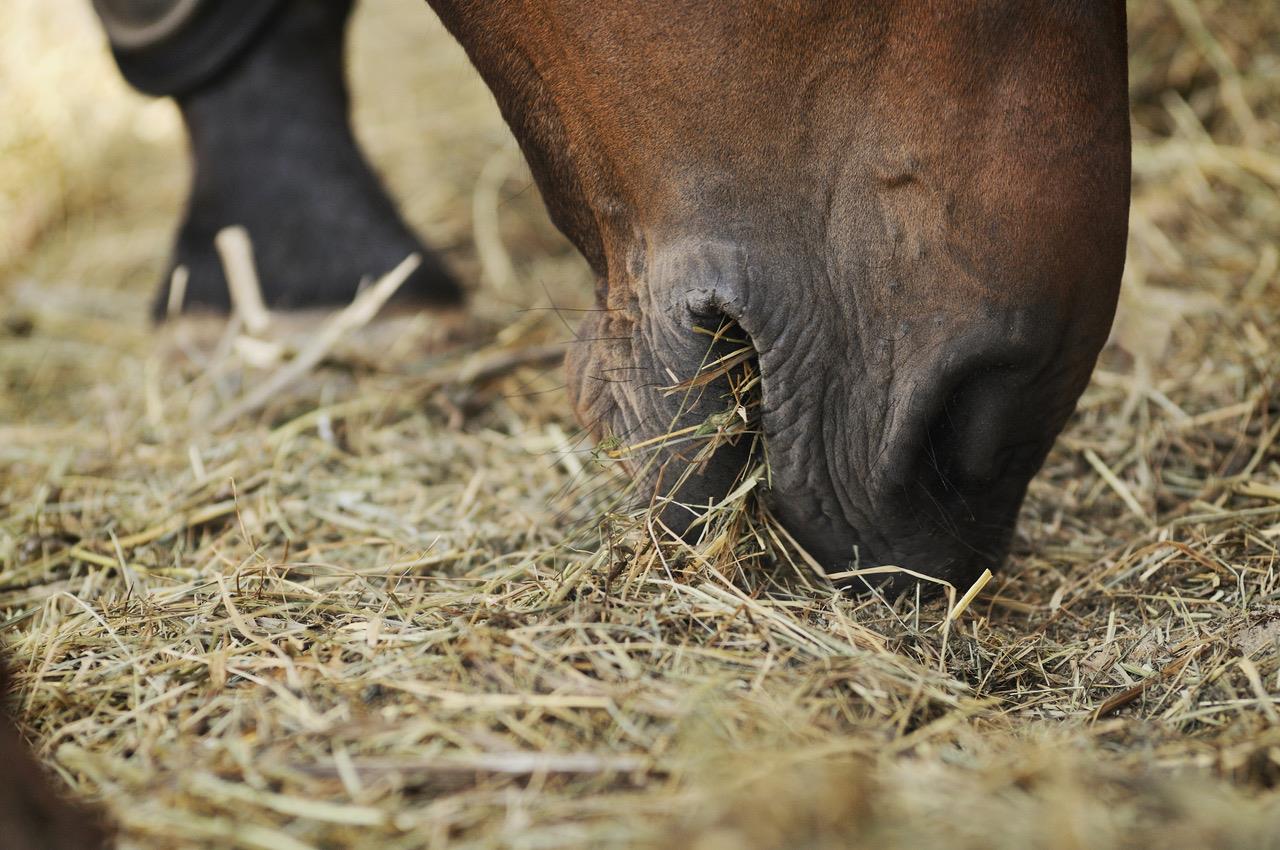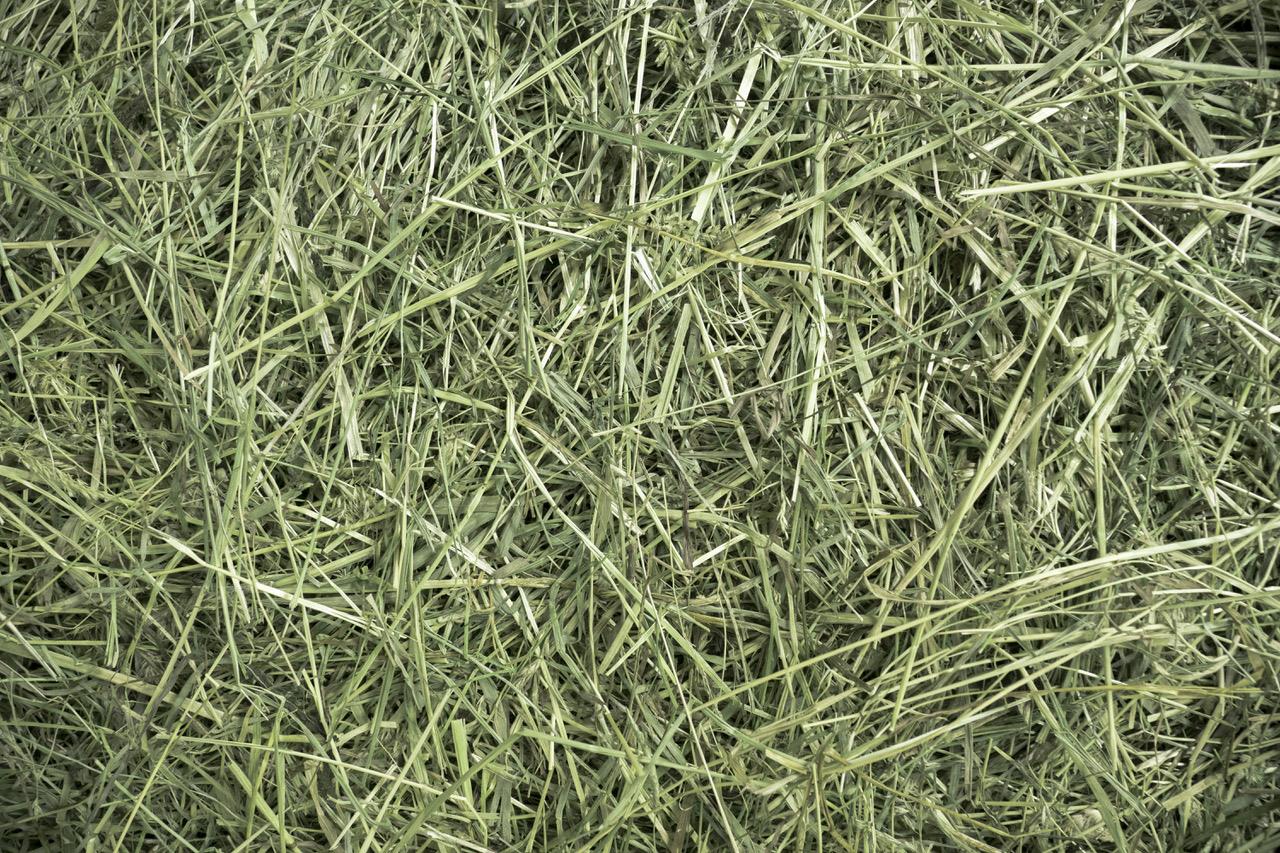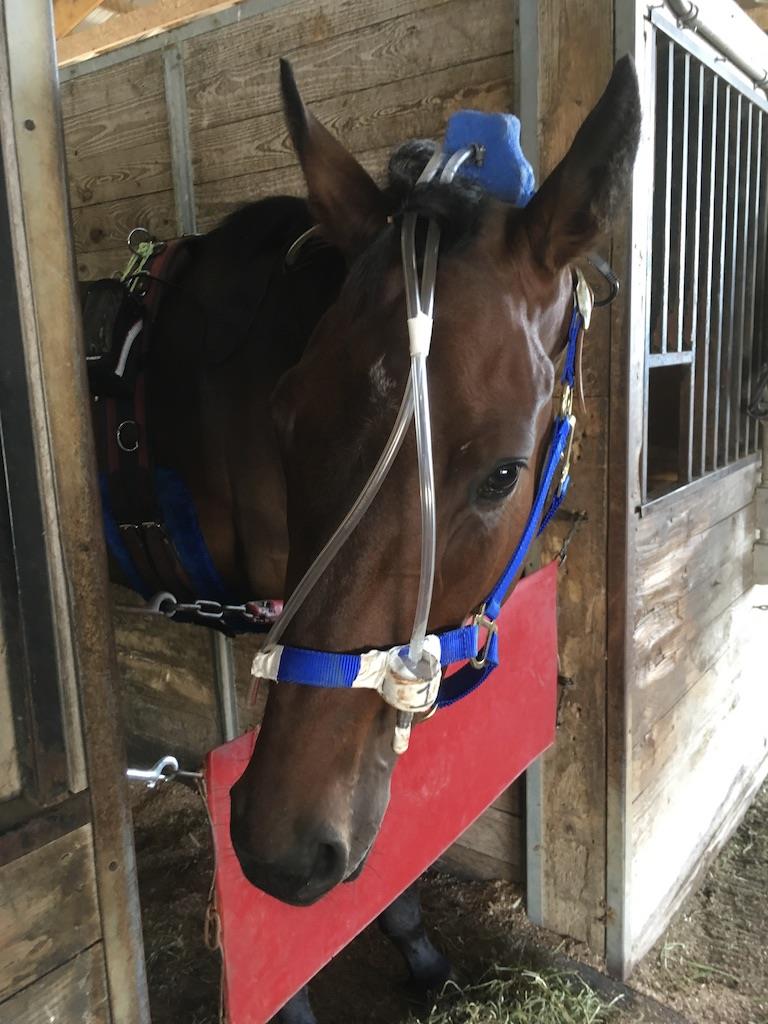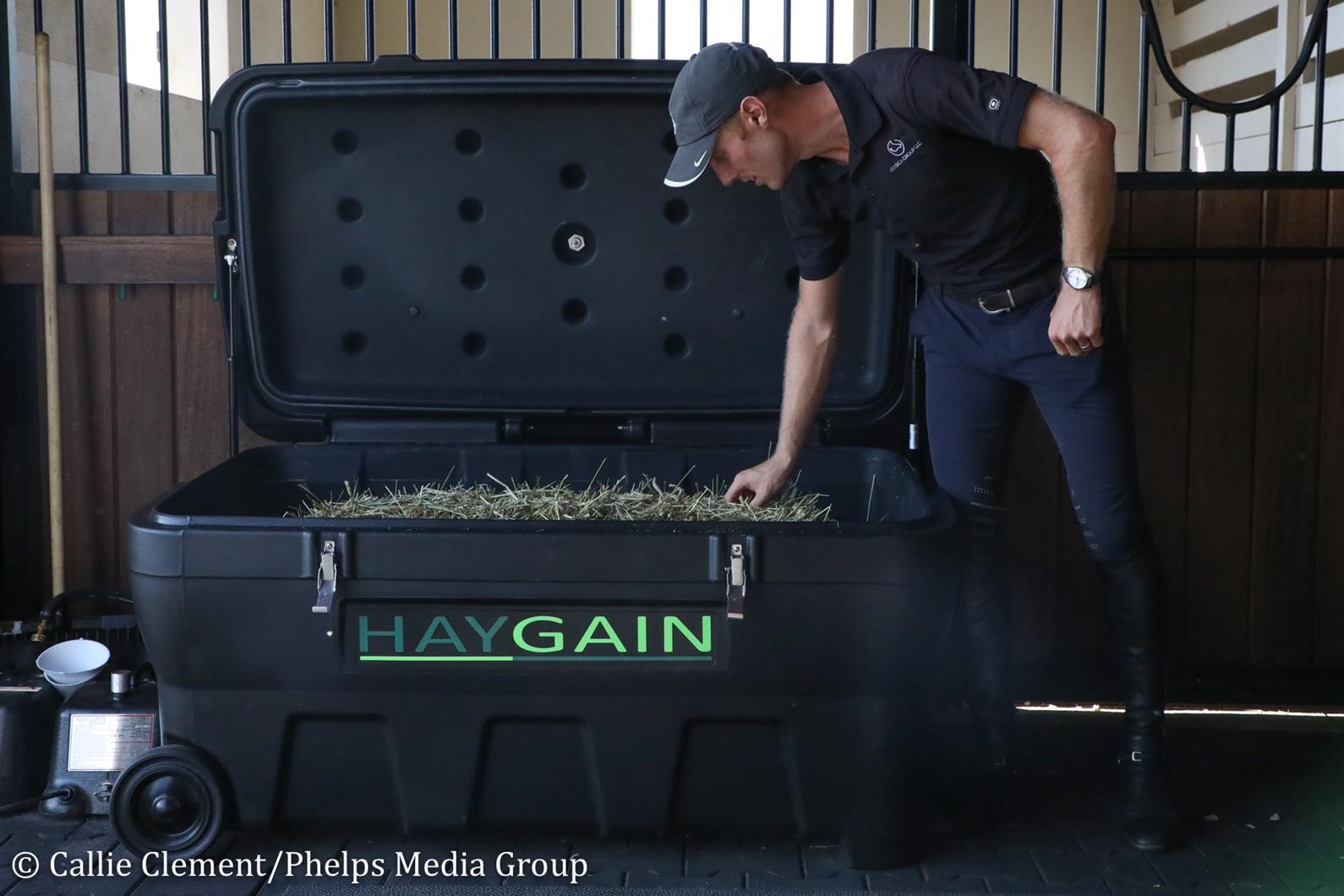
Photo: Olena Lyzun/Shutterstock
Dr. Laurent Couëtil is a veterinarian and professor of large animal medicine at Purdue University, where he also is the director of the Equine Sports Medicine Center and of Equine Research Programs in the Purdue College of Veterinary Medicine. Couëtil specializes in the early detection and treatment of respiratory diseases in equine athletes and has been studying the problem of equine asthma in sport and race horses. We spoke with him about the causes and types of equine asthma and about steps horse owners and barn managers can take to prevent it.
“What is clear is that with improved environmental management you can really benefit horses with asthma a great deal,” Couëtil said. “These management changes are really quite cost-effective techniques. Using a hay steamer or switching to haylage doesn’t add a lot of expense, versus having to treat horses with medication and losing time in riding or competing. The message to me is that this is the most important thing to implement first, and then if you can’t control the problem with improved environment, then you might have to go to the next step, which is medication.”
Couëtil’s top tips for reducing equine asthma in a barn include
- Using high-quality hay or haylage
- Steaming hay before feeding it, which can reduce the most damaging smaller particles that can travel deeper into a horse’s lungs
- Feed hay from the ground, rather than from a hay net
- Keeping the barn as dust-free as possible
- Sweeping the barn aisle or using leaf-blowers when the horses are not in the barn
- Keeping barn doors open for better ventilation
- For horses prone to asthma in the barn, allowing regular turnout on pasture
- For those prone to asthma related to pasture allergies, more barn time
What is equine asthma?
“It’s a pretty broad definition, but essentially what we are talking about are horses that show respiratory signs but don’t seem to be sick, per se, in the sense that they don’t have a fever and don’t act like they have an infection—their appetite is fine, and they are bright.
“There’s a whole spectrum. The most severely affected can have what we used to call heaves; those horses are easy to recognize in the sense that they are very obviously having a hard time breathing just standing there in the stall. Their nostrils will be flaring and they have a lot of ‘abdominal push,’ which is where the term ‘heaves’ came from. Those have severe asthma.
“At the other end of the spectrum, there are horses who are not very much affected at all. You might only hear a cough once in a while or the horse might not be performing as well as he used to, and there’s nothing else we can find to explain that decrease in performance. These are the mild asthma cases.
“What all cases have in common is that they have some degree of airway inflammation if you look at their deep lungs. The best way to assess the degree of inflammation is by doing a bronchoalveolar lavage (BAL), or what I like to call a ‘lung wash.’ It seems to be a good way to assess the degree of inflammation in the airways and how the lung is doing. It’s not a good test if you are looking for an infection, especially a bacterial infection, but the horses we’re talking about are horses who do not have fevers and act well otherwise.
“As in people with asthma, you might not feel bad, but you have some degree of difficulty breathing. You can get to the point where you can’t catch your breath as you sit or stand there, but in the mild cases it might just bother you when you run or exercise. It’s the same range in horses.”

Photo: MI0photography90/Shutterstock
Are there different kinds of equine asthma, as there can be in people?
“In people, one form of asthma is seen in children or younger people, and that tends to be more of an allergic type of asthma. People with that
type of asthma tend to have a particular type of cells in their airway that we call eosinophils. We see the same kind of asthma in horses, especially in younger athletic horses. They also have eosinophils in their lung wash fluid. We think of that as more an allergic type of asthma.
“In humans, the severe form seen in adults—and especially the form that doesn’t respond well to inhaled medication—if you look at the kinds of cells in the airway in those people, they tend to be more neutrophils. These people look more like the more severely affected horses, the ‘heave-y’ horses.
“Asthma in humans and horses is fairly complex; it’s not a one-size-fits-all type of disease. You have mild to severe and different types of inflammatory cells in the airway.”
How common is asthma in horses and what causes it?
“Let’s start with the severe, or heaves, form, because that’s the one that’s been studied the most and for the longest time. There are two main kinds of it. There’s the classic winter form, where the horse is indoors more in the winter and fed hay in the stall, and that’s when they show the signs. This is most common in climates where you have to put horses in a barn in the winter, like the northern region of the United States. In those areas, as a ballpark figure, about 15% of horses have that condition. They’re usually more mature horses, in their teens or later.
“The second form looks exactly the same from the outside, but the trigger is different: it is that the horse is on pasture. We see that more in the southern U.S., in places like Louisiana and Florida. The horses might be fine in the winter, but starting in May or June and peaking in July or August, they show signs that are the same as those in the winter horses: nostrils flaring, coughing, increased effort to breathe. But it’s triggered by molds and pollens in the pasture. So the trigger is still grass-related, but in the winter form the grass is dry, because it’s hay. There haven’t been large studies to look at the incidence of the summer-pasture form, but we think it’s about 10% or less. Horses with the winter form do fine on pasture, and horses with the summer-pasture form do better on hay—and you have a few unlucky horses who suffer from both forms.
“Those are the two severe forms. But there is also a milder form. We did a recent study in Thoroughbred racehorses here in Indiana that found that 80% of them had some degree of inflammation in their airways that we’d call asthma. It’s not entirely surprising, because these horses spend as much as 23 hours a day indoors.
“When we looked at how they did, the more inflammation they had in their lungs, the lower their performance. So clearly it’s not just ‘normal’—it does have an impact on how those horses are performing. It doesn’t mean that a horse with some degree of airway inflammation cannot win; but if that horse didn’t have that inflammation, it would be able to perform better and to what would be a more true indication of what it is capable of doing.”

Photo: Courtesy of Dr. Laurent Couëtil
What kinds of things are horses inhaling when they’re eating hay, for example?
“We have shown in studies that it’s important to measure what the horse is exposed to at the tip of the nose, rather than just measuring somewhere in the back of the stall, because some horses might bury their noses and others might just take a bite and then move away from the hay. Measuring the exposure in their breathing zone—the volume of air they breathe in and out—is more precise. We measured two different kinds of particles, some measuring less than 100 microns; to give you an idea of the size, 50 to 100 microns is the width of a human hair. Particles less than 100 microns are called inhalable, and you can see them. The small particles, which are less than four microns, are called respirable; you can’t see them with the naked eye.
“We know from humans that these respirable particles go deep in the lung, whereas the inhalable particles tend to be stuck more in the nose and throat.
“We have found in our study that just the very small particles—the respirable ones—were tightly associated with the severity of inflammation in the airway. Essentially, the higher the exposure to the small particles, the higher the lung inflammation, and it particularly affected the neutrophils. The neutrophils are like the guards: their job is to find these particles are foreign objects and get rid of them or kill them if it’s an infectious agent.
“We also measured the composition of the dust itself and looked at other so-called irritants that are part of the dust particles and they contribute to causing inflammation in the lung. There’s always contamination with bacteria from the environment, of course, and the endotoxins they carry. And if you have dust you have molds, fungi, too.”
How can stable management practices help prevent or mitigate equine asthma?
“For the barn-related asthma, particularly when it’s severe, it helps if you can turn the horse out, and it’s been shown that giving low-dust hay and feed helps.
“In a study we did at the track, we wanted to know whether feeding horses lower-dust hay could improve lung health. Horses were allocated to either eating their regular hay for a six-week period or they were fed steamed hay, which was their regular hay steamed in a Haygain steamer. A third group was fed haylage, which has a higher water content than hay. We measured dust in the horses’ breathing zone and did a BAL at the beginning, at three weeks, and at six weeks, and throughout we assessed their health.
“Sure enough, we found that the steamed hay and the haylage decreased the amount of dust the horses were exposed to. That was expected, but nobody before had looked at the effect on lung health. And we did see a decrease mainly in the neutrophils in the airways.
“It’s been shown that wetting hay down, by dunking it in water before you feed it, will decrease the dust exposure. But the issue is that, especially as you get into the warmer weather, that hay will dry again and you’re back to square one. And if you leave the hay in water all the time, a lot of the nutrients leach out. The other issue with wetting hay down is that this creates a source of moisture somewhere in the barn or stall, so you might have fungal growth in that corner of the stall. So it does have its problem.
“I have a lot of horses referred here from practitioners who aren’t seeing them respond even though they are receiving wet hay. So I think there’s only so much you can accomplish with that.
“Ventilation is also important, so you want to keep the barn doors open and having other ways to help with ventilation. Don’t use a leaf-blower in the barn or, if you do, kick the horses out. It takes about an hour for dust and the particles we are worried about to settle back down.”

When you steam hay, does the heat also help?
“It helps because it does have a sterilization effect, killing bacteria and fungi. That’s an important aspect. Studies in the United Kingdom also have shown that, unlike keeping hay wet, steaming doesn’t negatively effect the quality of the hay by leaching nutrients out. In the case of steaming, those nutrients are still there.
“Most of the time, too, horses do seem to like the steamed hay, so if you have a horse that is a picky eater, they usually tend to do quite well with the steamed hay. That’s another side benefit.”
What management strategies can mitigate the pasture-associated summer form equine asthma?
“Look at the reports from weather stations about mold levels and pollen levels from trees and grasses. When those levels start going up, that’s when trouble will happen. Those horses also can have trouble in barns that are well ventilated, because if you bring air into those barns from outside, you’re bringing in all those triggers, which are airborne.
“These horses do better inside. If you feed them hay, feeding them hay from the ground is always better than from a hay net. We’ve shown in studies that if you feed a horse from a hay net, you get about three to four times higher dust exposure than if you’re feeding that same hay from the ground
“Horses also are more likely to show signs if they are eating dusty or low-quality hay and if they are eating out of a round bale, even if they are outdoors, especially if it’s exposed to the rain and will mold more. If you use a round bale, try to protect it by using a feeder that has a cover over it to keep the bale in better shape. When you store round bales, protect them from the elements.”
Can mowing help?
“Mowing doesn’t seem to change what is triggering the disease for the summer-pasture form of equine asthma. It mainly seems to be eating from grass, rather than tree pollen, that is triggering these horses’ problems. It’s likely we’re talking more about mold-type fungi that are on the grass, and not necessarily grass pollen itself, as a trigger. But that hasn’t been worked out completely; researchers are still studying that.”
Are there other things that can help treat an asthmatic horse?
“If you have a show horse that you need to get ready, omega-3 supplements do help. Medications, especially inhaled medications, can also help horses by speeding up the resolution of the problem.”
Want articles like this delivered to your inbox every week? Sign up to receive the Equestrian Weekly newsletter here.
This article is original content produced by US Equestrian and may only be shared via social media. It is not to be repurposed or used on any other website than USequestrian.org.


